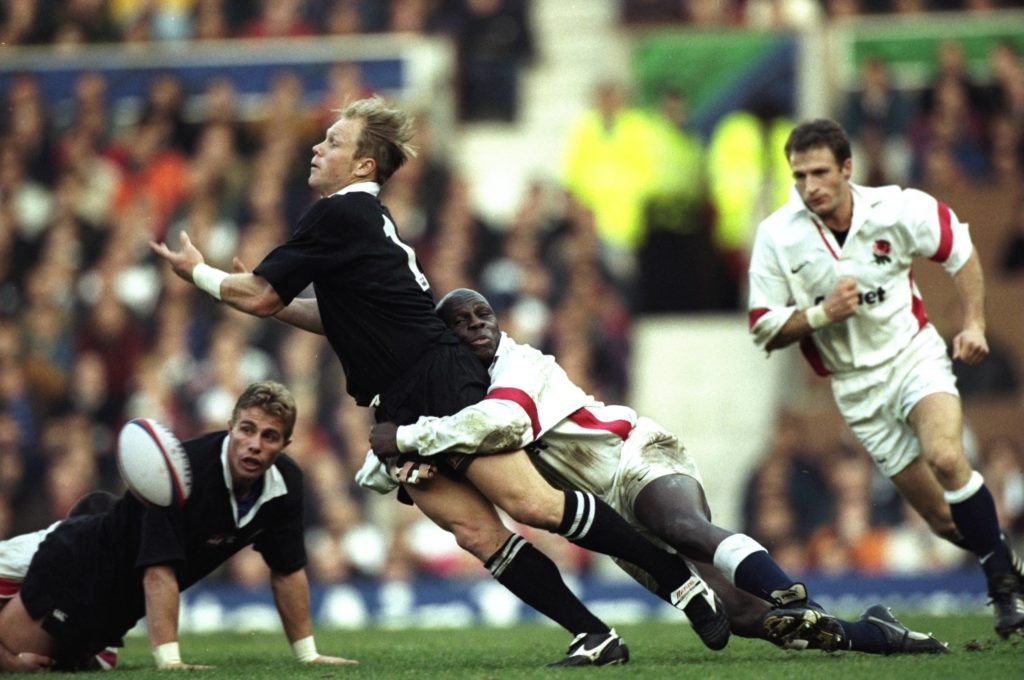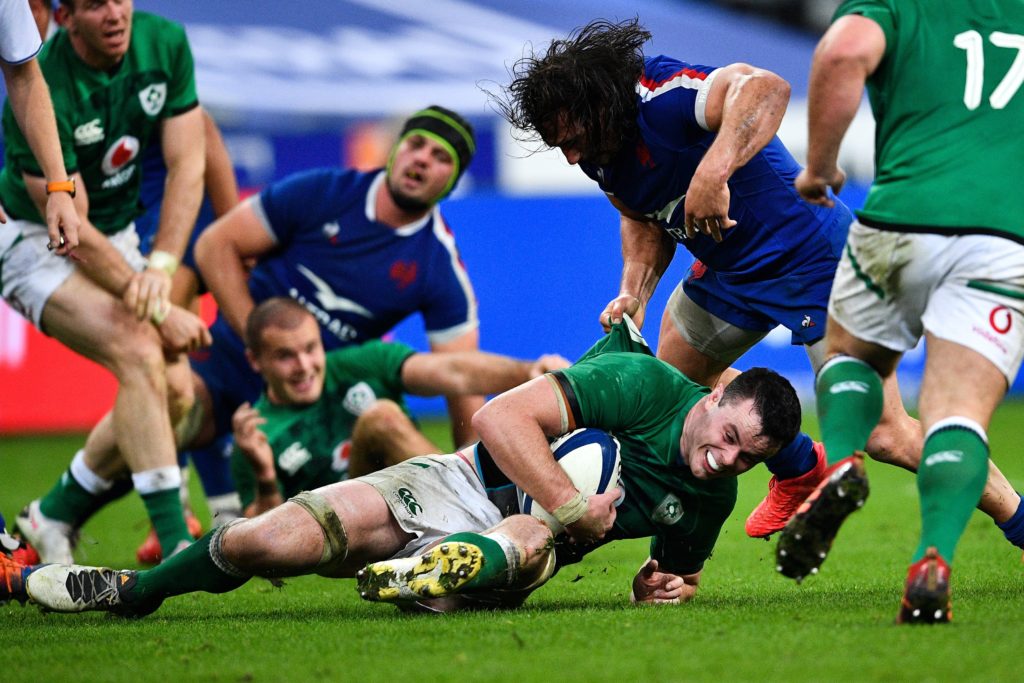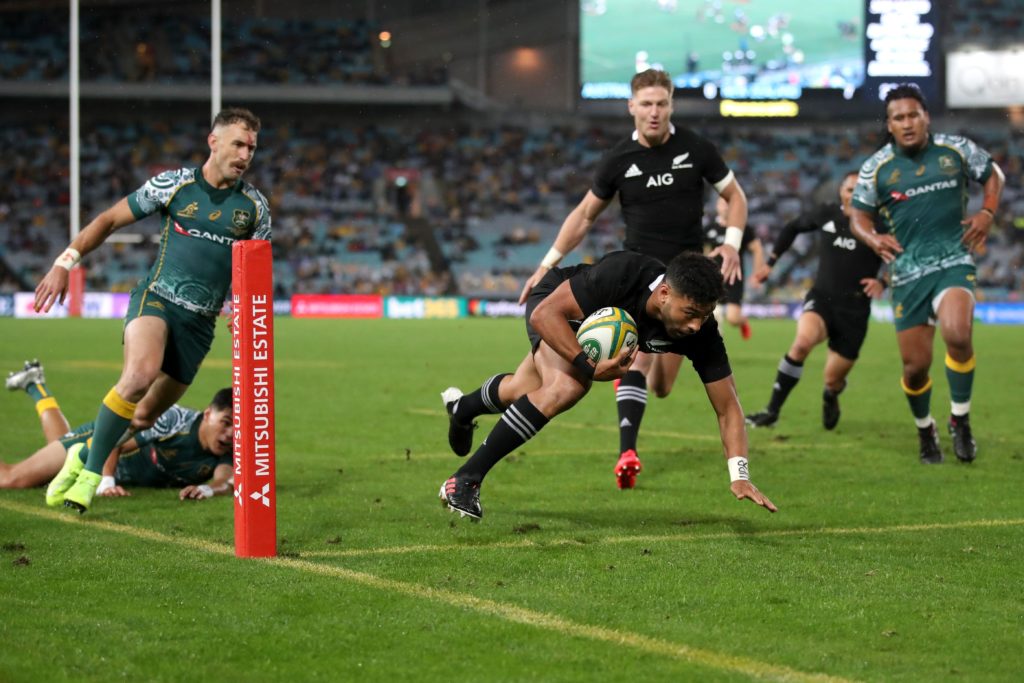At the moment there are empty seats at rugby stadiums all over the world because of social distancing requirements. But unless there is a dramatic shift away from the obsession with rush defence and kick-and-grind rugby, there will still be thousands of empty seats long after the Covid-19 pandemic has gone.
Rugby purists reject the idea entirely that test football is in the entertainment business, but there is no doubt that it is.
Bums have to be on seats for the professional game to survive and they particularly have to be on the massively-priced seats at Twickenham, Stade de France, Aviva Stadium and all the other major international grounds.
The purists say that victories win fans and drive interest, which is true. But rugby sold exclusively as drama with little spectacle is high risk. If you serve up 80 minutes of turgid football devoid of attacking ambition or subtle refinery, it’s asking everyone to care only about the outcome.
There is only a destination, no journey, and soon enough even the best teams will lose a few games and suddenly the ticket prices seem extortionate and the economics of the entire professional game are impacted.
Rugby purists reject the idea entirely that test football is in the entertainment business, but there is no doubt that it is.
Rugby is a game of balance – always has been. There is a place for both brutal defence and clever attack and the best teams have always combined the two.
Things have gone awry for the sport, particularly in the professional era, when there is too much of one and not enough of the other as happened between 2007 and 2011.
That was a cycle disrupted by the madness of introducing the so called Experimental Law Variations that were intended to make the game more open and flowing, but instead saw everyone decide it was safer to play without the ball.
We had four years of kick-chase and a World Cup in 2011 that was won not by attacking brilliance, but by the unerring accuracy of the All Blacks’ back three under the high ball.
And in 2003, another cycle of defensive rugby was capped off when England won a World Cup on the strength of their tackling and Jonny Wilkinson’s brilliant, almost faultless, kicking.
Without doubt, the international game has drifted back to a similarly conservative state where defences have become so good and so disruptive that teams are again choosing to kick possession away and then tackle their opponent into mistakes or submission.

“There are a number of reasons why I stopped playing the game and all of them combined to the point where I’d had enough,” says former All Blacks wing Jeff Wilson.
“One of them was the fact that the game had got to the point where there was no space and it wasn’t as much fun. It became an arm wrestle and in my last two seasons it was kick and defend and I thought the game in the early 2000s became a scrap where defences were winning the day.
“England won a World Cup playing the way they did – they scrummed, they kicked and they defended and we are in that cycle again.”
To support Wilson’s point is the paltry six tries that were scored across a bumper weekend of Autumn Nations Cup and Tri-Nations rugby in the third week of November.
The lack of tries was merely the statistical representation of some fairly forgettable rugby where attacking intent was nowhere to be seen.
We had three tests that were bruising and demanding and one, between England and Ireland, where the muscularity was incredible.
We had three tests that were bruising and demanding and one, between England and Ireland, where the muscularity was incredible.
The collisions were eye-watering, genuine watch-between-the-cracks-in-your fingers sort of stuff as two giant packs hammered into each other with a ferocity that is hard to imagine is sustainable.
The sheer explosiveness of it was compelling, but as two sides crashed into each other around the ruck trying to win those critical inches over the gainline, there was also a deeper sense that this type of rugby will quickly lose its appeal.

More worrying still was the sense that there will be broken athletes all over the world if this sort of rugby persists. The human form was not designed to endure the sort of impacts that were on view at Twickenham, and Maro Itoje may well appear to be an indestructible beast at the moment but the carnage will soon take its toll, and he might peak with the Lions next year and then systematically break down to the point where he’s half the player by the next World Cup.
But no one has their eye on anything beyond next week in test football at the moment and when defensive rugby is proving so successful, what reason is there to change?
England appear hell-bent on taking weaponised defence to the next level. Ireland have been playing with a similar conservatism for a decade now – hiding what are narrow and under developed skill-sets behind the ball carrying of behemoths such as James Ryan and Tadhg Furlong.
South Africa have maybe never done anything other than kick and crunch rugby, while Argentina are the latest converts, buoyed by their historic win against the All Blacks.
South Africa have maybe never done anything other than kick and crunch rugby, while Argentina are the latest converts, buoyed by their historic win against the All Blacks.
Defence is dominating tests and that’s maybe because it is a coachable skill not reliant so much on genetics or natural instincts, but attitude and hard work.
Obsessive defence is the game’s great leveller – a means for fairly limited teams to punch above their weight and prevent the focus falling on their inability to pass and catch under pressure or naturally determine when and how to exploit a numerical advantage.
But it’s also an entertainment killer and national unions won’t be able to mend Covid-broken balance sheets if the game continues to be dominated by defensive, attritional rugby.
“Each year everyone is getting bigger, faster and stronger and most teams are willing to back their defence now to win games,” says All Blacks lock Patrick Tuipulotu.
“If you have that mind-set then you are going to have games decided on defence. But like anything, you want to score points because that is what rugby is about. You have to attack.”
If the defensive stranglehold is going to be broken and the emphasis placed back on building inventive attack, then it is the All Blacks who are going to have to pave the way. The All Blacks are the only team – maybe with a bit of help from Australia – who can force a revolution.
They have both the will to do so and the players. Attacking rugby is in the DNA and while they have lost in recent seasons to the suffocating rugby employed by England, Ireland, South Africa and Argentina, they remain convinced their all-out attack approach can find a way to succeed.
Their commitment to use the ball and score tries is total and even when that looked such a hopeless strategy in their infamous loss to the Pumas, they saw after the game that they weren’t as bereft of attacking spark as they first thought.

“They changed the rules at the breakdown a few years back to favour the attacking team but defences got smarter and worked out how to keep 14 or 15 men on their feet,” says All Blacks assistant coach John Plumtree.
“That is something that teams in the North do well and it is certainly something Argentina are good at. But we do see opportunities [to attack] and we have got to get better at seeing the space and it’s not just about running into it, it is also about kicking. Defences are getting really good, though, and when the All Blacks tend to get beaten is when defences dominate attack.”
This conviction that all-out attack can succeed is visible in the All Blacks’ team selection for the return test against the Pumas, sticking as they have, with the same backline. There was some suggestion they might shy away from the dual play-making strategy, but Foster said, more than ever, that set-up appears the right one as it gives the the kicking variety and decision-making horse power that they feel sits at the core of their attacking strategy.
We put a lot of onus on getting the strongest and clearest decision-makers on the park and when we don’t make good decisions that’s where the finger gets pointed,
All Blacks coach Ian Foster
“We put a lot of onus on getting the strongest and clearest decision-makers on the park and when we don’t make good decisions that’s where the finger gets pointed,” he said.
“It’s not something we are fixed on but right now we feel it is the right thing for this All Blacks team.”
It’s possibly a stunning act of ill-conceived defiance by the All Blacks that they continue to believe they can attack their way past any defence and build the breadth of game to ensure they can score tries in this age of destructive tackling.
But either way, they are committed and we are now in the midst of an arms race – one where the likes of England, South Africa, Ireland and Argentina are building a vast defensive armoury, while the All Blacks try to manufacture an attack game that can blow anything and everything apart.


Comments
Join free and tell us what you really think!
Sign up for free